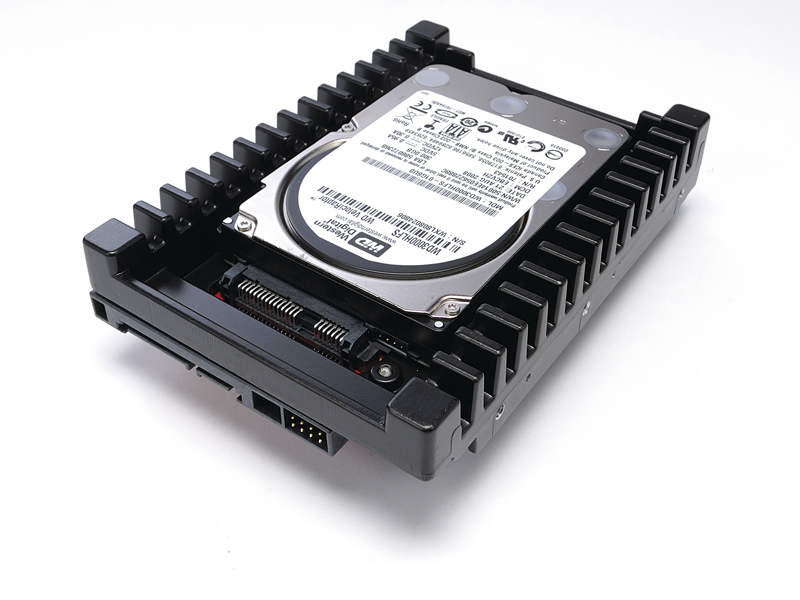
Accepting change is hard.
It's the same reason old people are disgusted by young people talking loudly on mobile phones and why middle-aged people listen only to Paul Weller records and complain that modern music is 'just banging sounds'.
It's also why the idea of replacing our gaming PCs' hard drives with solid state drives seems like madness. The idea of a glorified memory card being better than several decades of established, reliable mechanical technology? Nonsense?
Unfortunately, the jig is up. The future is coming on quick and the venerable hard drive may not be able to stand against it. Over the last year, solid state storage has quietly established itself as a reliable mainstay in both netbooks like the Eee PC and in high-end laptops. The capacity may still be rock-bottom, but the Windows load times are frighteningly fast.
What's been slower is the crossover to desktops, as it's hard to take a full-size PC with less than 500GB of storage seriously. Now that the technology's a couple of generations along, the sort of speeds an SSD offers are frankly astonishing.
32GB, 64GB or even 128GB may seem like a miserably small amount of space, but bear in mind that Vista and its pagefile only needs about 20GB. That leaves room enough for your most played couple of games plus Office and Photoshop, all of which will enjoy dramatically quicker load times.
The rest of your stuff can lurk on a cheapie half-terabyte secondary hard drive. Soon enough, SSDs themselves will hit that half-terabyte mark, and noisy, sluggish HDDs will be a thing of the past.
Get daily insight, inspiration and deals in your inbox
Sign up for breaking news, reviews, opinion, top tech deals, and more.
SSDomination
That said, two factors keep SSDs from assuming immediate dominance.
First is price – a decent SSD, even a low capacity one, goes for the same amount of money as a mid-range or even high-end graphics card. The sort of component that could revolutionise your PC in other words, while even the best SSD will, realistically speaking, only offer some extra convenience.
That said, if your main system is a laptop and you genuinely use it on the move a lot, a good SSD – especially Intel's wonderful X25 – will dramatically change that system. There'll be far less of a load-up time and the lack of moving parts in a SSD means less battery drain and more sturdiness in your storage medium. The sooner all lappies tote a SSD, the better.
For desktops, though, we're still a few years off SSDs being a necessity. Fortunately, all the SSDs here will slot into either a laptop or a desktop, so long as you've got SATA rather than PATA drive connections.
The second thing to bear in mind is that the technology's still new, so performance can be all over the place. There are a lot of differences between drives, and nothing resembling price standardisation as yet. It's only with the most recent generation that these things have really found their feet, so shop carefully.
While the average speeds the Patriot Warp V.2 and OCZ Core Series demonstrate are spectacular, the exhaustive graphs behind those numbers show an awful lot of fluctuation: random latency spikes and read/write slowdowns meaning sustained, day-to-day performance won't be quite the revelation the numbers suggest.
The laughably expensive Intel X25, by contrast, is a whole lot more constant, generally keeping that incredible 220MB/s read speed sustained rather than wobbling all over the place. It's for precisely that reason that the X25 is so expensive, as Intel's gone to a lot of efforts with the firmware and controller to make it a cut above the rest.
Additionally, while the read times are incredible, generally SSDs write a bit slower than hard drives do, which is worth bearing in mind if you need something for regular large file copying – making system backups, for instance. There are also lifespan problems with many models, especially the more affordable ones.